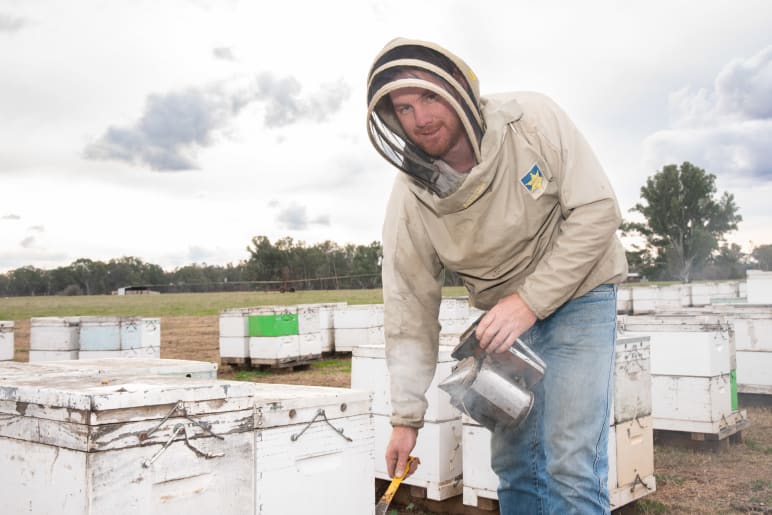LIVING with varroa mite could add thousands of dollars’ worth of operational costs for beekeepers annually.
It comes as producers prepare for the mass migration of thousands of hives for agriculture pollination in the coming months.
Nearly two years to the day have passed since the mite was first detected in NSW, and Walkabout Aperies manager Don Whitehead said it’s not a matter of if, but when the varroa mite will have an impact on Victorian producers.
“Right now there is no call for panic as we are in a situation where we just need to wait and respond if the dynamics change,” Mr Whitehead said.
“NSW are in a very frustrating position as the government has spent millions of dollars to eradicate the varroa mite but with no luck so far.
Latest Stories
“Unfortunately, the Victorian aperies industry will be impacted by varroa no matter how we look at it as preparation is our only form of preparation at this point.
The varroa mite is an external parasitic mite that attacks and feeds on honey bees and is one of the most damaging honey bee pests in the world.
Varroa destructor is a distinctive-looking small mite, around 1mm in diameter and is reddish-brown colour and can be seen with the naked eye.
The mite attaches itself to the bee and feeds on them which weakens the bee and kills colonies.
A significant mite infestation leads to the death of a honey bee colony, usually in the late autumn through Walkabout Apiaries business manager Greg Whitehead of Milawa believes while the varroa mite presents no problems locally, it will be a matter of time before problems will arise.
Despite the anticipation, It’s business as usual for the Milawa farm as production is currently going full steam ahead, however, keeping a watchful eye on what is over the hill.
“We have been busy with the production of honey and have located our bees to suit the winter conditions as pollination activities are low as is the activity of hives,” Mr Whitehead said.
“There are a few factors that have the potential when varroa does cross the border into Victoria.
“Horticulturists locally are dependent on bees for pollination and could have a crippling affect if bees are impacted with varroa mite in Victoria and have fewer bees creating lower honey production and the production of fruit alike.
“Walkabout Apiaries produces local honey using Australian eucalypt trees from the high country.
“Leading into spring, the risk does increase when multiple bees come together from multiple locations.
“Agriculture Victoria have suggested aperies keep their bees in Victoria, not to cross into NSW and avoid any hotspots.
“We have more than enough work and resources to keep the bees locally and not cross the border.
“Until we get varroa, no one knows how we will actually manage varroa as NSW really have no answers except to isolate.
“Agriculture Victoria a pre-empting workshops which are currently on stand-by to aid the affects of varroa when they do arrive.
“When varroa does arrive, the first two years will be the toughest and will initially affect bees severely.
“Right now, we are remaining positive and we are at the ready and will keep up with regular monitoring.”
















